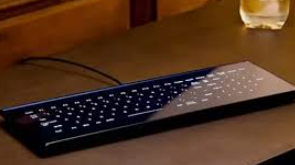Contents
show
Introduction
In today’s world of smart homes and IoT (Internet of Things), touch screen keypads have become an integral part of modern living. From controlling lights and appliances to managing security systems, a touch screen keypad display offers convenience and sophistication. But did you know you can create one at home? This blog will guide you through the steps to make a touch screen keypad display, the tools you’ll need, and how to optimize it for your needs.
What is a Touch Screen Keypad Display?
- Smart home systems: To control lights, thermostats, and appliances.
- Security systems: For entering passcodes and managing alarms.
- Custom projects: Such as DIY robotics or home automation setups.
Why Build a Touch Screen Keypad Display at Home?
Building your own touch screen keypad display has several advantages:
- Customization: Tailor the interface to your specific needs.
- Cost-Effectiveness: Save money compared to buying commercial systems.
- Learning Opportunity: Gain hands-on experience with electronics and programming.
- Integration: Seamlessly connect it with your existing smart home devices.
Tools and Materials You’ll Need
To create a touch screen keypad display, you’ll need the following:
- Touch Screen Display Module: Common options include TFT or OLED screens.
- Microcontroller: Arduino, Raspberry Pi, or ESP32 are popular choices.
- Power Supply: Ensure compatibility with your components.
- Wires and Connectors: For connecting the components.
- Software: Arduino IDE or Python for programming.
- Enclosure: A case to house the display and components.
Step-by-Step Guide to Building a Touch Screen Keypad Display
Step 1: Plan Your Design
- Decide the purpose of your touch screen keypad. Will it control lights, act as a security panel, or serve another function?
- Sketch the layout of the keypad, including the number of buttons and their placement.
Step 2: Choose the Right Components
- Select a touch screen display that fits your project. For example, a 3.5-inch TFT display is ideal for compact designs.
- Choose a microcontroller that supports touch screen functionality. Raspberry Pi is great for advanced projects, while Arduino is perfect for beginners.
Step 3: Assemble the Hardware
- Connect the touch screen display to the microcontroller using jumper wires.
- Power the system with a compatible power supply.
- Test the connections to ensure everything is working correctly.
Step 4: Program the Keypad
- Write code to define the touch screen’s functionality. For example:
- Assign specific actions to each button (e.g., turning on lights or unlocking doors).
- Use libraries like Adafruit GFX or TFT_eSPI for Arduino to simplify programming.
- Test the code and debug any issues.
Step 5: Build the Enclosure
- Design an enclosure to protect the components and give the keypad a polished look.
- Use materials like acrylic, wood, or 3D-printed plastic.
Step 6: Test and Optimize
- Test the touch screen keypad in real-world scenarios.
- Optimize the interface for ease of use and responsiveness.
Applications of a Touch Screen Keypad Display
A DIY touch screen keypad display can be used in various applications:
- Smart Home Control: Manage lights, fans, and appliances.
- Security Systems: Enter passcodes and monitor cameras.
- Custom Projects: Control robots, drones, or other DIY electronics.
- Entertainment Systems: Use it as a remote for TVs or music systems.
Future Trends in Touch Screen Keypad Displays
The technology behind touch screen keypads is constantly evolving. Here are some trends to watch:
- Haptic Feedback: Adding tactile responses to touch screens for a more interactive experience.
- AI Integration: Using AI to predict user behavior and automate tasks.
- Energy Efficiency: Developing low-power displays for sustainable use.
- Flexible Screens: Incorporating foldable or rollable displays for innovative designs.
Conclusion
Building a touch screen keypad display at home is a rewarding project that combines creativity and technical skills. By following this guide, you can create a functional and stylish keypad tailored to your needs. Whether you’re a tech enthusiast or a DIY hobbyist, this project offers endless possibilities for customization and innovation.Start building your touch screen keypad display today and take your smart home setup to the next level!
